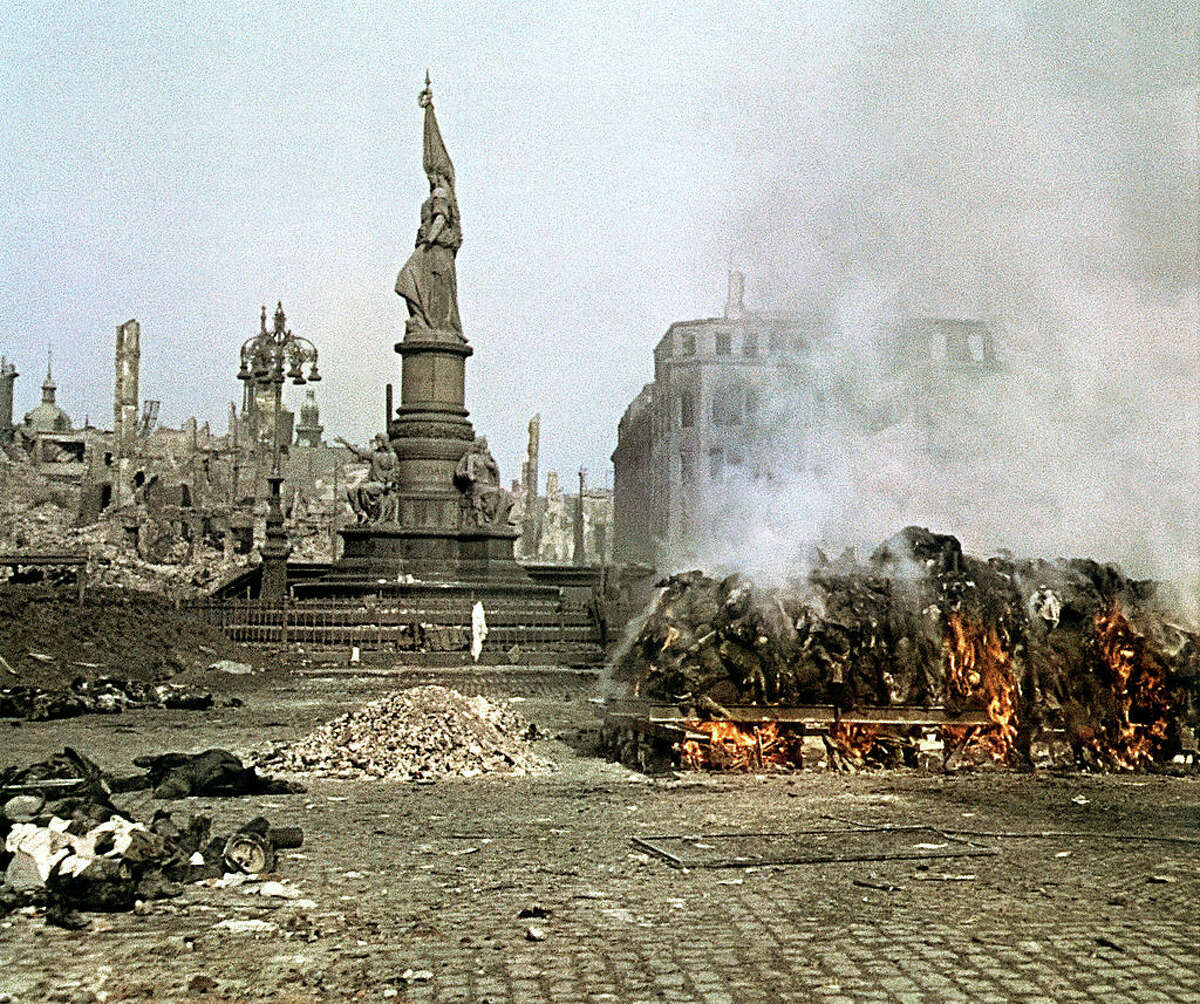Callafangers wrote: ↑Tue Oct 21, 2025 5:56 am
Are you talking about the piles of ash and/or bones and/or rocks and/or rubble appearing near to the cremation pyres? There is no confirmation of this even being ash (as opposed to rubble from the mass destruction -- note the building materials appearing in the pile; bricks, a pipe, wooden blocks?), let alone human bones, let alone crushed human bones, let alone mostly human ash (rather than wood ash).
There is no confirmation, but it's a likely conclusion from the photos.
When I look at the photos, it's apparent that efforts had been made to clear debris from the square. The building debris is mostly piled up near the buildings. The three pyres that I can see in the photos are in the middle of a relatively clean street, with these small ash piles adjacent to the pyres. I don't think it makes sense that someone would have swept all the building debris over to the pyres.

The color of the ashes is also totally different than the color of the debris piles. The harder question is determining what the ashes were. My opinion is that the small white objects appear to be bone fragments. All of this is visually consistent across photographs.
Is something else possible? Sure. To align with your theory, maybe the scorched bodies were taken away in the same carts that were bringing fresh bodies in. Left behind was only the fine ash, which would have been mostly wood and clothing ash, and this is what formed the piles. The photos had to be taken at an inopportune moment to miss the part where scorched bodies were separated from the pyres, cooled, and hauled away. I just don't see good support for this theory, and to my knowledge it would be a very atypical procedure.
Callafangers wrote: ↑Tue Oct 21, 2025 5:56 am
For outdoor cremations, the volume of wood remnants (ash + non-combustibles) exceeds the volume of corpse remnants
by a factor of about ten, per calculations based on Mattogno's work.
Yeah. Another problem is that the ashes were supposedly left to sit, exposed to the elements, for weeks. (Reported above as two weeks but I think it may have been longer.) We can see rain puddles in some of the photos. Who knows what a mess was made of the ashes during this time.
Callafangers wrote: ↑Tue Oct 21, 2025 5:56 am
As Leif F. (and Irving) mentions, the main purpose of these cremations was for
prevention of epidemic, hence the probability for such massive fuel quantities is further reduced -- no need to reduce corpses to ash, just to eliminate a biohazard.
I do think what you say is
possible, but by searching the web I can't find
any example of partial cremation like this. On the other hand, cremation for the prevention of epidemics is easily compatible with total reduction. When cattle with mad cow disease are cremated, their carcasses are typically reduced to ashes and bone. In the Black Death, all cases of cremation seem to have been total reduction, but maybe that would be a place to explore for a historical example of your theory.

